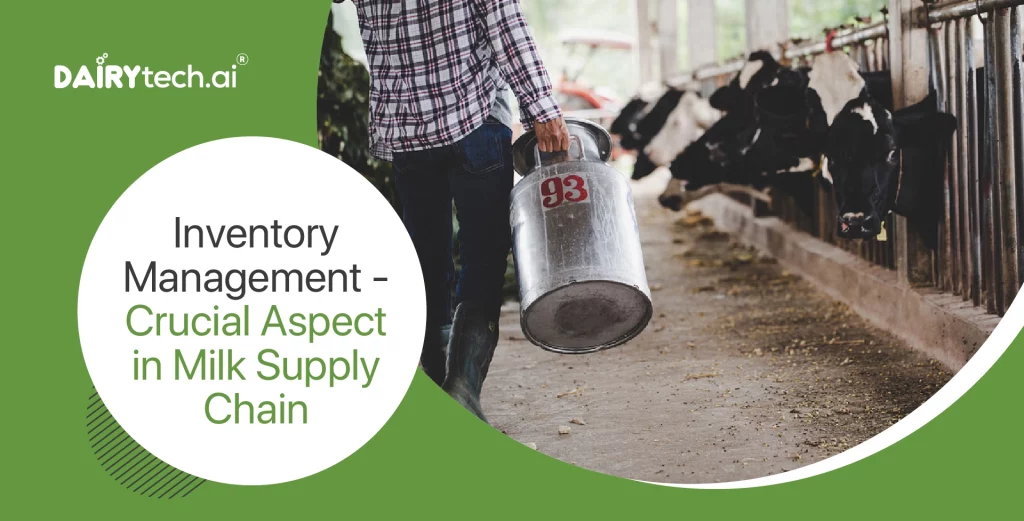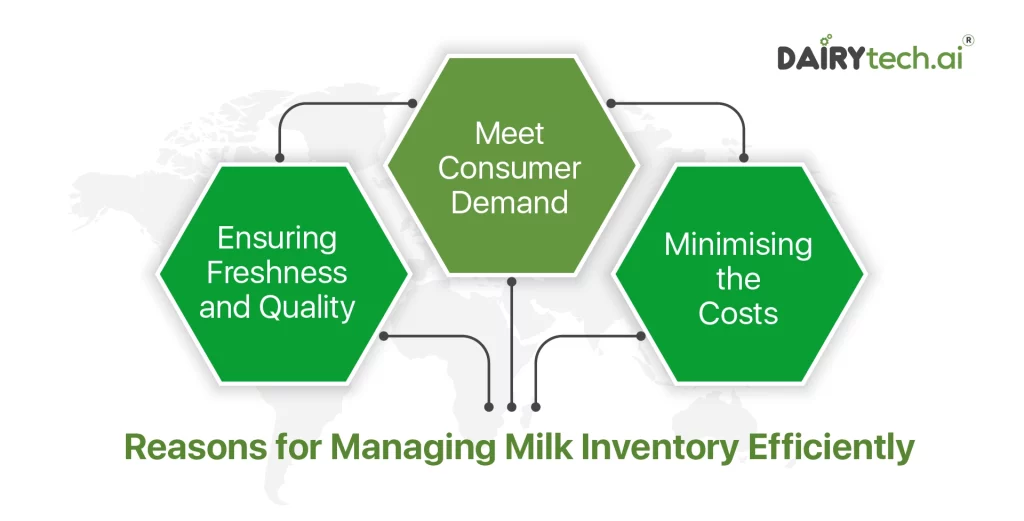Inventory Management – A Key Component of Milk Supply Chain

Milk, being the primary source of nutrients, is also referred to as “nature’s most perfect food” and is considered to be a critical part of our daily diet. The journey of milk from the farm till it reaches the table involves a complex and intricate supply chain, where inventory management plays a pivotal role.
Milk has a shorter shelf life, which makes it important for dairy businesses to manage their inventory accurately so that they do not end up facing losses due to spoilage. Inventory management for a dairy business depends on its size and complexity. However, regardless of the size of the dairy business, it can benefit from an inventory management system.
In this blog, we will discuss the significance of inventory management within the milk supply chain and see how it makes sure that milk reaches the consumer’s table efficiently and safely.
Reasons for managing milk inventory efficiently
Ensuring freshness and quality
Milk has a shorter shelf life and becomes easily perishable if not kept at a decent temperature. It is crucial to manage inventory accurately and precisely, which allows dairy farms to use the oldest stock first. Promoting first-in first-out reduces the likelihood of spoilage or waste.
Meet consumer demand
Factors like seasonal changes, promotions, or any other unforeseen events can significantly lead to a dip or surge in demand. Efficient inventory management allows dairy businesses to adjust their stocks accordingly and remain stable during these fluctuations without getting overstocked or stocked out.
Minimising costs
Storing milk can be costly due to the regular need for temperature maintenance and observation to keep it fresh. On the contrary, being unable to determine demand can result in missed sales opportunities. Well-managed inventory management ensures that enough milk is available without being overstocked or stocked out, which helps in minimising costs and maximising revenue.
Role of inventory management systems
We have explored the software’s benefits and now we’ll see how it works;
Demand forecast
Keeping excessive inventory can be costly, and keeping insufficient inventory can lead to missing out on potential opportunities. The software generates an inventory report that includes details like current inventory present, total inventory required to fulfil customer demand, and extra inventory required to collect in order to fulfil customer demand. To produce accurate forecasts, dairy milk distributors take into account past sales data, market trends, and other pertinent variables. Accuracy is being increased by using more sophisticated analytics and machine learning algorithms.
Inventory optimisation
Dairy businesses can set minimum and maximum stock thresholds once the demand forecast is in place to optimise their inventory levels and make sure they always have enough milk on hand without overstocking. It’s a delicate balancing act that requires real-time monitoring and adjustment.
FIFO and LIFO
FIFO (First-in First-out) and LIFO (Last-in First-out) are inventory management techniques. They determine the order in which the milk batches will be used.
FIFI: This involves using the oldest milk first to prevent spoilage and ensure that consumers receive the freshest product.
LIFO: This involves using the newest stock first. This method reduces the storage cost, but it increases the risk of selling solder milk and impacts product quality.
Integrating technology
In order to streamline inventory management in the supply chain, modern technology is essential. Automated inventory systems frequently provide real-time information on milk inventory levels and movements.
Supply chain visibility
This crucial component of inventory management aids in keeping track of the batch of milk that is distributed at a particular moment. They can respond quickly to problems like transportation or processing delays Thanks to this visibility.
The dairy supply chain unquestionably relies heavily on inventory management. While optimising costs and reducing waste, it makes sure that this essential good reaches consumers in a fresh and safe state. Professionals in the dairy industry are continuously improving their inventory management procedures in the era of cutting-edge technology and data analytics using milk delivery management software, which improve efficiency and dependability. As customers, we are able to recognise the effort that is expended to guarantee that a cold glass of milk is always available.

